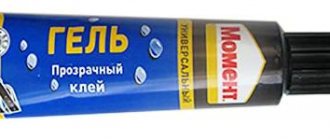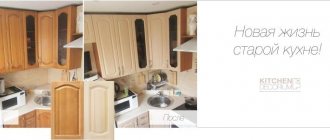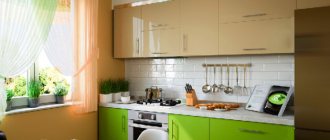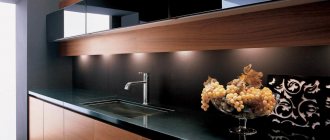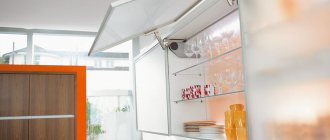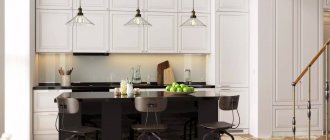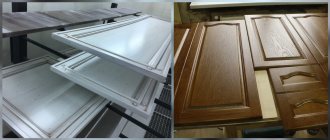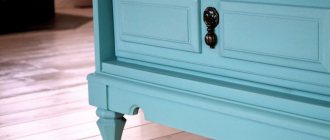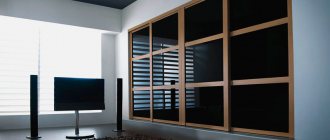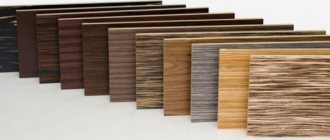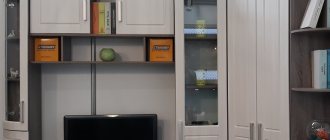“Everything new is well forgotten old!” This statement applies to many things. Furniture with a patina is no exception, which, before leaving the production workshop, has managed to “grow old.”
For many people, even the concept itself is unfamiliar. After all, if you have visited our website, it means you are trying to buy an original kitchen set, so in this article we will try to answer the following questions as fully as possible:
- What is patina and what does it have to do with furniture?
- Can a bed or kitchen with a patina be made from MDF?
- Is it possible to create a patina using technology with your own hands?
Definition of patina
Patina is a natural phenomenon.
Metal and wood products are exposed to it in natural conditions. People have long noticed on coins made of silver, brass and copper that over time a coating forms on their surface, causing them to take on a completely different appearance. Under the influence of the environment, pollination made the colors brighter, darkening and cracks appeared on the products. On antique items you can notice a natural patina, for which they are highly valued. The natural process takes too long; it will take decades. Under the influence of atmospheric factors, the film on objects can have several shades:
- greenish;
- brown;
- dark grey;
- bluish.
The term came to us from Italy. In Florence, back in the 14th century, craftsmen learned how to age things by hand. They used gypsum for this and applied it to the voids of wooden products. When everything had hardened, the top was covered with a layer of gold foil and then a layer of varnish. The craftsmen also managed to learn how to patina metal. Over time, they began to apply patina to objects of art.
The process of surface oxidation is called patination. With the help of modern technologies, it has been possible to develop various technologies for artificial aging of things, including patination of wood and other surfaces. With their help, you don’t have to wait for many years until things acquire a touch of antiquity.
Sets
- Acrylic patina for wood. It's acrylic paint. The least complicated in practice and ideally suited for apartment conditions. Acrylic patina is applied with a brush. The advantage is the large number of colors that can be used to tint the product. If necessary, repainting is done to achieve the desired shade.
How to treat the surface → Room decoration → How to choose the right paint → Surface treatment technologies → Leveling and finishing the walls → Selecting and applying a primer → Removal from the surface → Stretch ceilings and technologies → Reviews and testimonials
What to combine patina with?
Materials for kitchen facades
The interior is always a combination of many small details. Patina is a decor that requires a special atmosphere and environment. The owners will have to try hard to correctly highlight the “antique” furniture, but at the same time not oversaturate the interior with decor.
Curtains
Choosing curtains to match the patina is a great idea, but not always easy to implement, so you have to choose from other options. In this case, the color of the curtains is determined by the furniture or set.
For example, if the kitchen is light green, then the curtains are either light green or a shade that harmonizes with it. If the furniture is only white, then it is better to dilute it with textiles of rich colors so that the room is not boring and monotonous.
A lot depends on the style of the room. For a classic kitchen, choose curtains without a pattern or with an unobtrusive, sophisticated pattern; the length should be strictly to the floor. Country style is more loyal, but the best option would be light curtains in pastel colors with bright floral patterns.
Wallpaper
In the kitchen, the main showpiece is the patina set. For this reason, you should not choose bright or large-patterned wallpapers—they should only serve as a backdrop for beautiful facades.
It is advisable to use only neutral, calm tones to decorate the walls. If the kitchen is made in Provence style, then it is possible to use wallpaper with a rough texture.
Floor and ceiling
The white ceiling is a classic that should not be deviated from. This will add space and air to the room; the patina also goes well with white. Even an ordinary matte stretch ceiling will do - it will give the impression of a perfect whitewash.
If white seems too boring, then it is worth remembering the rule: the ceiling should be at least a couple of tones lighter than all the furniture in the room.
There are practically no requirements for flooring. The main thing is that it matches the style and color with the rest of the room. The material should look high quality and beautiful so as not to get lost against the background of “antique” furniture.
Apron
When choosing an apron, they first look at its practicality, because it should:
- be moisture resistant;
- do not be afraid of temperature changes;
- easy to clean and so on.
An excellent choice would be natural or artificial stone, ceramic tiles, and MDF panels. Ideally, the tone of the apron matches the patina. You can choose a simpler option: the pattern on the apron matches the decor of the facade.
Table and chairs
Since the effect of antique furniture is created, it is better to forget about plastic chairs and glass tables. Furniture should only be wooden, which opens up the possibility of aging it - this will create the impression that all kitchen accessories are from the same era. Classic interiors love wood carvings, and Provence allows the use of wicker chairs.
Lighting
Styles that use patina themselves require sun. And the patina itself also needs light, since it simply won’t be visible in a dim room. It turns out that a lot of lighting is needed.
Natural light is important for country and Provence style, so you need to open the window as much as possible, leaving only a thin curtain. To the chandelier you can add several more lamps with lamps that give a warm, sun-like glow.
For kitchens in classic and shabby chic style, a chic pendant chandelier is needed in the center of the room with a large number of lamps for maximum illumination of the kitchen. It is ideal if the base of the lamp matches the tone of the patina, but this is not a necessary item.
Craquelure technique
Additional cracks, the so-called “craquelures,” provide the wood with a high decorative effect. To do this, use a special varnish, the main feature of which is cracking. In order for the created cracks to become noticeable, they are rubbed with a contrasting composition. Craquelure is often considered decoupage.
The surface is treated only with a primer; the use of a brush or sandpaper is prohibited. The first layer is applied with craquelure/decoupage varnish, which is selected according to the color of the wood. If required, a second layer is applied to make the nuance brighter.
A layer of decoupage varnish is applied to the still uncured varnish, which partially cracks during drying, forming cracks characteristic of the old coating. The finished surface is rubbed down. To consolidate the result obtained, the part is coated with a layer of varnish (most often shellac class).
How to apply patina to furniture facades (2 videos)
Patina with different effects (30 photos)
Patina is natural aging. True lovers of antique furniture are willing to pay huge amounts of money for it. But today, you don’t have to spend a lot of money to buy antique furniture. Just pay attention to the facades with patina.
Manufacturers produce antique patinated facades using artificial methods. Sometimes from the outside it is even difficult to distinguish such a facade from natural wood. But it’s enough to open the doors in a furnished kitchen or bedroom to understand that this is MDF. This will be noticeable on the inside; in order to reduce the cost, manufacturers leave it simply white.
Patina can be of absolutely any color and shade, but a façade with white patina looks beautiful, especially in a bedroom or living room. Such facades come in matte and glossy finishes.
When matte facades are used, the patina can be tinged with gold or silver. This is a complex process and this effect cannot be achieved on a glossy surface. It should be taken into account that the price for such work increases significantly.
Black color looks beautiful on a glossy surface. Such facades are suitable for a more strict and restrained style.
Kitchen facades are often treated using craquelure technology. This is a method that helps to achieve deeper cracks. Next, the material is coated with several layers of varnish. Deep cracks can be seen even in the photo. Such facades are more expensive, but they look impressive.
Some people think that furniture can be aged with their own hands. This is partly true. But this requires certain skills and equipment. As practice shows, the first time you can only ruin the material. Therefore, it is better to order facades with patina from the manufacturer.
Patinating furniture in 7 steps
Lifting mechanisms for kitchen facades: choosing an opening option
How to patina MDF facades with your own hands? Let's look at step-by-step instructions for achieving the desired look of antique furniture.
We sand the facade using a sanding machine or manually with fine sandpaper. Remove the varnish layer, if any. Thoroughly clean the surface of any dust generated during the sanding process.
Apply wood stain to the entire surface in an even layer. To do this, use a spray bottle, roller or brush. Remember that the stain layer should dry for at least 8-10 hours, ideally more. Take your time to achieve the best result.
We varnish the product with self-priming varnish. Self-priming varnish is a product that combines the properties of varnish and primer. Wait for it to dry completely.
We sand the façade again after the applied layers of stain and varnish have dried. Manual sanding is sufficient.
We apply the patination composition to the façade using a spray bottle or a professional sprayer.
When painting, pay special attention to recesses, patterns, and even areas. You should not patina the handles of cabinet doors; the decor in such a place will not last long.
We create abrasions by carefully sanding with sandpaper or rags
Be patient, this is the longest stage of work.
We cover the created abrasions with a final layer of varnish.
This process is undoubtedly painstaking and requires skill, patience and skill, but with a strong desire it can be mastered. To begin with, we would like to recommend that beginners try their hand not on an expensive cabinet, but on unnecessary material. This way you will master the technique and avoid mistakes in the future.
For work, choose the safest materials, if possible, those that do not have a toxic odor, take care of your health and the well-being of your household and pets.
As can be seen from our article, the process of painting and patination of MDF facades of kitchen sets is undoubtedly interesting. Show your imagination and diligence, and your home will be filled with a truly unique and charming atmosphere of antiquity!
Mechanical resistance
The indicator is quite low for facades covered with film: traces are easily left, for example, from a cut with a knife. Also, do not expose the surface to aggressive cleaning agents, such as powder.
Patinated facades withstand mechanical stress well. With strong pressure, a mark may remain that will not be noticeable on a surface of a certain texture. Patinated furniture is also resistant to abrasion.
Veneered facades are resistant to mechanical stress. Even cuts leave virtually no traces behind.
Patination of furniture is a special way of applying paint in certain places to create decorative effects. Thanks to this approach, the facade looks more elegant and resembles antiques. At the same time, the furniture itself can be made from budget materials, which will not be noticeable in any way. Painting compositions can be applied to the MDF film facade or natural solid wood.
Patination is carried out using several methods - manual application with a brush and spraying with a spray gun. Both of them have their advantages and disadvantages, so using them together is the most successful, especially if complex effects are required.
Watch a video of applying patina to film-coated MDF facades:
| Standard sizes of kitchen cabinets: analysis of the main parameters |
| Video.1. Finishing MDF facades in patina film |
| Rice. 7. Facade with golden patina with milled grout |
| Rice. 8. Facade with gold patina without milling grout |
How is excess patina removed?
Okay, the patina has been applied, how can I remove it? Removing excess patina is usually done with Scotch Brite or steel wool - these are slightly abrasive grinding materials that remove patina, but do not scratch the surface of the facade.
| An interesting technology for patination of MDF facades in film using a primer. |
| Rice. 9. Sanding materials used to remove excess patina |
| Rice. 10. Patina is left along the internal milling of the facade, without grouting |
By the way, if you apply a thick layer of patina, or dry the patina for a long time before applying varnish, then there is a possibility of weak adhesion of the applied varnish over the patina. Varnish must be applied to the patina in order to fix it on the surface of the facade.
Have you forgotten what adhesion is? Poor adhesion means that over time the varnish will peel off along with the patina. The result will not be decorative, but rather disfiguring.
| Rice. 11. Silver patina is applied along the contour of the facade and internal milling, without grouting |
What is decapé during patination?
On highly porous wood, the patina is often left only in the pores. This finishing method is called decape, that is, “removing the head,” in the literal Russian translation.
| Rice. 12. Decape effect when applying patina on wood |
| Rice. 13. Patina applied to a structural film, imitation decapé |
To better highlight the pores, the wood is treated with steel brushes along the grain, this technique is called brushing. Wood species with pores in the early, soft layers, such as oak, ash and many exotic species, lend themselves well to brushing.
| Rice. 14. Brushed wood |
When brushing pine, wide strips of the early layers of annual rings are removed. Brushing is ineffective for the following species: beech, maple, pear, cherry, teak, olive wood.
Patinated kitchen fronts
Patination of kitchen facades is a special way of artificially aging a product, creating a patina effect. Patinated kitchen facades are a fairly popular technique used by craftsmen and designers. The word patina itself means a greenish-brown coating that appears as a result of oxidation under the influence of the environment on bronze, copper, and brass objects.
What is patina and patination
Now the term patination or patina is used in a broader sense. Patination represents signs of noble aesthetic aging on various objects. Which are made not only of metal, but also of other materials. At the same time, patinated kitchen facades can be either wooden, made from solid wood, or natural wood. And from a more accessible and widespread material - MDF.
Patination of kitchen facades is an artificial aging of the surface of new facades, which gives the products the charm of antiquity and the nobility of the classics. To create a patina effect, kitchen facades undergo special treatment, as a result of which the color of the product is shaded and acquires a certain contrast.
Today, quite often the patination method can be seen on MDF facades, covered with PVC film or painted MDF facades. Patina looks especially good on film facades with a pattern, matching the color and texture of natural wood, with complex milling and imitation of frames and panels. If the kitchen facade has complex deep milling, patination can successfully highlight the milling pattern.
patinated kitchen fronts
The process of patination of kitchen facades
There are many methods and methods for patination of furniture facades. In this case, you can use special paints, varnishes and compositions. For example, in the store you can find special compositions that are called “Patina” and differ from each other in the resulting visual effect. Depending on the name of the composition: “Golden Patina” or “Green Patina”, these substances create different types of patina on the surface of the decorated product: blue, rusty, green. Before using such compositions, you must carefully read the instructions. Since the methods of using various materials for patination differ significantly from each other.
Patinated kitchen facades can be ordered ready-made from a furniture factory. Or you can get creative and create a patina effect on your kitchen cabinets yourself.
Below we describe one of the many ways to patina a kitchen facade made of MDF.
First, using a spray bottle, you need to apply a thin layer of insulator to the surface of the facade. That is, the adhesive barrier is a primer intended for laminated surfaces. Then apply a colorless polyurethane primer. After which you need to finely sand the second layer with colorless primer.
patina on facades
Next, the patina itself is applied directly. As an applied product, special compositions can be used, which are called patina or special paints and varnishes with special effects. For example, with the effect of gilding, mother-of-pearl or metallic effect.
After applying the patination composition to the surface of the facade, the patina needs to be processed. Depending on the desired effect, the patina treatment may vary. To treat the surface to be patinated, you can use a scraper, steel wool, a piece of foam rubber, etc.
The resulting visual patina effect must be secured and protected from external influences using one, usually two layers of varnish. Varnish can be polyurethane or acrylic, glossy or matte.
patinated fronts in the kitchen
A kitchen with patinated facades looks solid, elegant and noble. And due to the fact that the patinated surface is covered with a protective varnish, the kitchen facade is quite resistant to abrasion, mechanical and chemical influences.
Categories
- Accessories and dishes
- Decor and design
- Accessories
- Furniture for kitchen
- Sinks and mixers
- Filling sections
- Layout
- Useful tips
- Kitchen manufacturers
- Kitchen renovation
- Recipes and products
- Style
- Tabletops
- Large equipment
- Small equipment
- Apron
- Facades
- Color
Feedback(C) 2014-2021 Any full or partial copying of site materials is permitted only if there is an active link to the Kitchen Project website. | Site Map
vote
Article rating
Selection of headset and decorative effect
Most often, when selecting a kitchen set, the designer suggests a golden or silver patina - it is ideal for classic furniture colors. But if you wish, you can choose a less universal option - black, gray, yellow and even red patina. It is better if non-standard solutions contrast with the basic tone of the headset, then they will look more attractive.
Recommendations for purchasing a kitchen with patina:
It is worth finding out in advance what patination method the manufacturer uses. A more durable coating is one that is applied in several layers. It will look natural and expensive. For classics, choose a kitchen with a slight antique effect, where the patina is slightly darker than the main facades
For sets with complex milling, you should also not make the facades too dark, and a lot of gold and silver will look too flashy. If you decide to purchase a kitchen with a craquelure effect, it is important that a reliable varnish is applied in several layers. The fact is that such a coating itself is fragile and requires especially strong external protection. Gloss does not combine well with patina, since during the natural aging of wood there is no shine on its surface
Therefore, most kitchen sets that have undergone patination have a matte finish. The fittings must be appropriate. It is made artificially aged or made to match the facades in style and color. If you want to give the furniture more texture, before patination, the parts are brushed - treated with a hard brush to remove soft fibers. As a result, irregularities are created on the base, which look very good after patination.
Metal coatings
Patina coating of metal parts is carried out mainly for parts exposed to heat (parts of fireplaces, barbecues, etc.). This treatment protects the surface and also maintains or improves its appearance.
Patina for metal can serve as an excellent decorative coating; the most popular colors are gold and white (silver).
You can apply patina to a metal surface in the same way as when working on wood, using a sponge or brush. We patina with a sponge if you want to only slightly emphasize a certain place. You need to touch the metal barely, with sweeping movements. Also be careful with the brush (about 3 cm wide). If there is any excess paint left on the material, immediately wipe it off with a dry cloth before it hardens.
Color palette for a kitchen with patina
The choice of a specific shade for furniture depends on the overall style of the interior. For a kitchen in a classic style, a white set is suitable. Wood and pistachio tones will fit perfectly into a Provence style interior.
White
In a kitchen with white furniture, green, blue and purple patina looks impressive. Gilding or silver composition can add special luxury to a white set. The panels add elegance to the furniture.
Be sure to use details in cream, beige and brown tones with gold. Panels will help make facades more elegant.
The interior of a light kitchen with a patina in a classic style is shown in the photo below.
Black
A black set is a very unusual and bold solution, however, it is not suitable for every interior. It is better not to furnish a small kitchen with such furniture - black color will weigh down the already small space and narrow it. If the kitchen is light and spacious, then you can safely order a black set with patina. For decoration, compositions that imitate silver and gold are best suited. White compositions for covering furniture are also suitable.
Beige
A beige set is usually covered with a patina of the following shades:
- gold;
- grey;
- pale blue;
- green;
- lilac.
This combination looks impressive in a Provence and shabby chic style interior. Golden compositions are suitable for classic kitchen design.
Gray
For a gray kitchen, the best patina is the following tones:
- black;
- blue;
- white;
- green.
Patina effectively enhances the discreet gray color of the furniture and gives it a luxurious look. With proper design, such a set can result in a very beautiful interior design in a classic style. Another advantage of a gray kitchen is the fact that this shade looks equally good in a room of any size.
Green
Green furniture with patina is characteristic of the light shabby chic style. Aged furniture in greenish shades will look no less impressive in country style, especially pistachio and olive colors.
Light tones of green add lightness and airiness to the room. They harmonize well with the patina of the following colors:
- beige;
- grey;
- blue;
- brown.
Advice! Indoor plants against a green background can be somewhat lost in the room.
Red
Red color for a kitchen with patina is a rather bold decision. Such a bright color should be handled extremely carefully so as not to overload the interior with unnecessary decor. Red furniture with an antique effect fits best into country style. In this case, it is advisable to choose not bright colors, but slightly muted ones. For example, a dark burgundy set with a muted bronze or gold patina looks very impressive.
In general, the red color of furniture goes well with the following shades of patina:
- white;
- black;
- grey;
- terracotta;
- beige;
- brown.
There should be a minimum of additional decor in such an interior.
Features of processing large parts
The patination technology is slightly modified when working with large parts, such as door leaves, furniture facades, and wall panels. The preparatory stage is completely repeated without changes, but priming is carried out with a special primer, which is based on polyurethane or acrylic compounds.
When the primer dries, one thin layer of paint is applied. The part, completely dry after painting, is sanded with a metallized sponge called Scotch Brite. Then the surface is wiped dry and coated with a colorless polyurethane, acrylic or nitro varnish. The shade of varnish is selected based on the natural color of the wood being treated.
For birch, walnut and linden furniture, light, yellowish varnishes are used. For oak and alder, darker varnishes are used.
What is this - patina
Patina and the patination effect created with its help have been known for a long time. The patina itself is a film that forms on the surface of products made of copper, or bronze, and later brass. A peculiar oxide accompaniment made it possible to give the metal product deeper color schemes. Such products were valued much higher.
Later, this term began to be applied to the aging of wood and porcelain (the appearance of a network of irregular grooves - “wrinkles”). In the east, patinated porcelain, wood and metal had a sacred meaning.
Patination is the artificial aging of a completely new surface, which gives the product exclusivity and nobility. Wood and metals were subjected to aging in a similar way, and later materials created using modern technologies, such as MDF.
Let's find out, apply
At first glance, the patination effect is very complex, and it is almost impossible to use it in home production. Now there are entire courses and master classes that teach these techniques to everyone. In fact, the technology for applying patina itself is not complicated, and the skills acquired during the application process will stay with you for a long time.
And the first object on which artificial aging can be reproduced will be the kitchen. And the material that we will age is MDF.
If you have ready-made MDF facades for the kitchen, patina is not the only material we need.
So, let's select consumables and tools.
- MDF facades are laminated on one side, which will be internal and open at the ends, and the other side of the slab is the exposed MDF structure;
- Spray bottle, brushes, metal mesh for dishes;
- Insulator, also known as soil barrier;
- Colorless polyurethane primer;
- Patina, or as it is also called, a paint coating for special effects;
- Varnish for finishing the product.
We've started
This will save you quite a lot of money.
- First of all, we apply the insulator. The peculiarity of applying this material is that the barrier primer is applied exclusively in a thin layer, evenly. This can only be achieved by using a spray bottle;
- The second step is to apply a layer of colorless polyurethane primer;
- Third - grinding the second layer of soil;
- The fourth step is to apply the patina directly. There are several technological techniques here. The next step depends on the method of applying the patina.
- Fifth – processing and polishing the patina. As mentioned above, this step depends on the desired effect and, accordingly, on the method of processing the patina.
- The final stage is varnishing. We consolidate the resulting patination effect and protect it from external kitchen influences. The effect you want to achieve: shiny or matte patinated kitchen fronts, depends on the type of varnish chosen.
What do we want
We want to get aged, exclusive furniture made from MDF.
This can be achieved in the following, simplest way.
After applying the patina layer, it must be sanded. The layer is sanded with a kitchen mesh. At the same time, the more intensive the grinding process is, the more vivid the effect we will get at the output. Can I use sandpaper for this step? It is possible, but its use requires certain skills. Therefore, we suggest not to take risks.
Finally
The aging effect is indeed visually very striking. Using our recommendations, you can always recreate this miracle at home (see also). And our video report will help you see all this. Retro style will always be fashionable and in demand.
“Everything new is well forgotten old!” This statement applies to many things. Furniture with a patina is no exception, which has already become “old” before leaving the production workshop.
- What is patina and what does it have to do with furniture?
- Can a bed or patina be made from MDF?
- Is it possible to create a patina using technology with your own hands?
Possibility of using technology at home
Previously, only natural wood and metal products could be artificially aged using patination. Today, such an opportunity has arisen for MDF, which has significantly expanded the spread of technology in kitchen interiors. Many manufacturers sell MDF kitchen facades with a silver, gold or black patina, which look very extravagant and impressive.
Is it possible to apply the technology at home yourself, since at first glance it is quite complicated? It's definitely possible! In this case, the first impression is deceptive and the complexity of the technology is greatly exaggerated. Probably because of the amazing end result. There are a huge number of master classes in the currently fashionable hand made direction, where all stages of the process are described in detail. There are entire groups and forums where users share tips and tricks, helping each other and teaching beginners the art of patination.
To begin with, you should choose an object for experimentation. It will be the MDF facade from the kitchen cabinet.
Types of patina depending on the alloy
Different metals oxidize differently, which means the type and color of the age-related plaque that appears is different. This is determined not only by the parameters and shelf life, but also by the composition of the alloy, including all its impurities. For example, if the composition contains even a tiny fraction of iron, the patina will have a characteristic reddish tint. It is the impurities that cause the appearance of an oxidizing film on coins made of precious metals.
The patina on silver coins is usually due to an admixture of copper, and gold money discs would have no traces of oxides at all without the presence of impurities, since gold of the highest standard is usually used for coinage, and it is practically not subject to oxidation. However, on gold specimens one can often observe dots or slight stains of a darker color (even brown), which indicates the presence of copper.
The first sign of patina on silver coins is a slight yellow coating, then it turns crimson, turns blue-green and finally becomes dark gray or almost black.
Patina on copper coins
The leader in the formation of oxide film is copper. Copper oxide has a color close to black, but can sometimes be a lighter brown. The well-known green color of aged copper is formed by its sulfides and sulfates. If loose deposits with a greenish tint appear on the surface, it means that we are dealing with copper chloride, which behaves the worst and destroys the metal in a short time, leaving deep marks after cleaning (“bronze disease”).
In addition, sagging has to be dealt with if the coin is artificially aged. And finally, there is another type of patina on copper coins, which is called “malachite”. It looks noble and beautiful, has an amazing blue-green color and is a thin crystalline layer.
Modern metal money
As for modern samples, which are based on stainless steel or a copper-nickel compound, their surface oxidizes slowly and weakly, the color of the coating varies from gray to copper-golden. Aluminum wheels lose their shine and acquire a dull grayish coating. Brass coins deteriorate very quickly, beginning to darken or lose color and becoming almost white after just a few months. Good storage can, in certain cases, slow down this process. When brass alloy is exposed to chemicals, it turns red.
Another type of modern coins is steel plated with non-ferrous metals. The slightest damage to the coating, almost invisible to the eye, causes a violent oxidation process, as a result of which the entire applied film swells and the metal underneath rusts. It is very doubtful that such coins will ever be able to acquire a noble appearance in old age.
Patination defects and causes of their occurrence
Only single bubbles, craters with a diameter of no more than 1 mm, punctures, mechanical inclusions with a size of no more than 1 mm, scratches, and two noticeable shagreens are allowed on facade surfaces.
The total number of simultaneously present defects listed above per 0.5 sq. m. surfaces from among the permissible (quantitatively assessed) - no more than 2 pieces.
The main defects in patina finishing and their causes are presented in Table 2.
Main patination defects and their causes
| Coating defect | Possible reason |
| 1. Uneven application of patina | Poor preparation of the base, incorrect application technique, inappropriate type and parameters of the spray gun |
| 2. Peeling and poor adhesion of patina and varnish | Poor preparation of the base, incompatibility of materials, excessive application of patina and varnish |
| 3. Varnish smudges | Incorrect application process, inappropriate nozzle diameter, low paint viscosity, wrong thinner |
| 4. Uneven application of varnish | Unskilled application technique, poor preparation of the base. |
